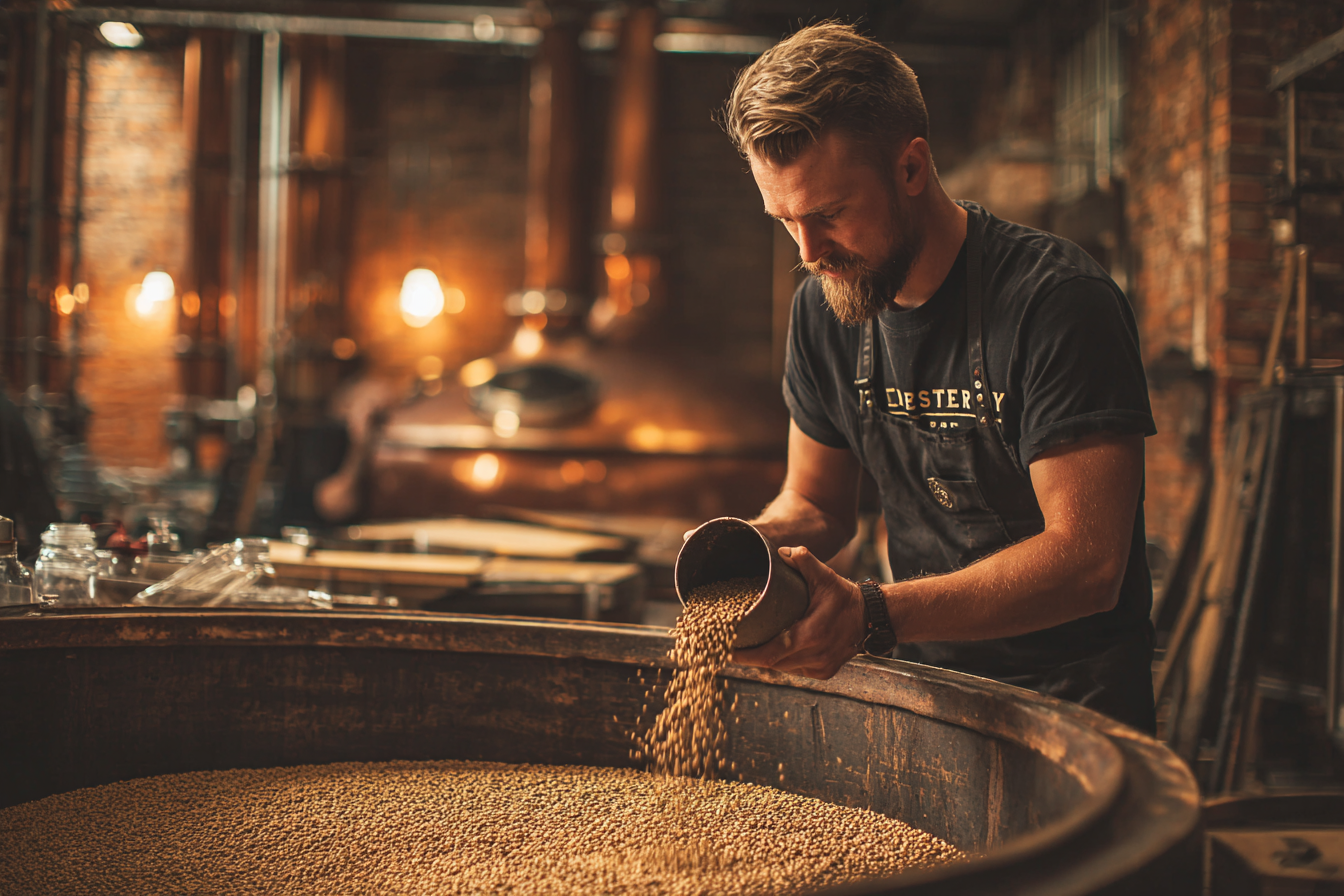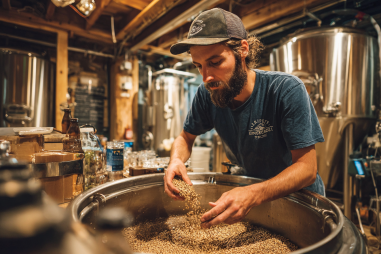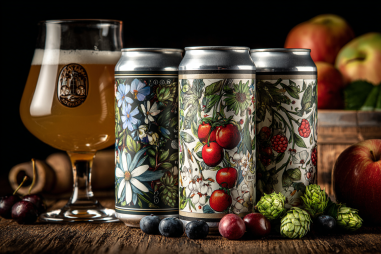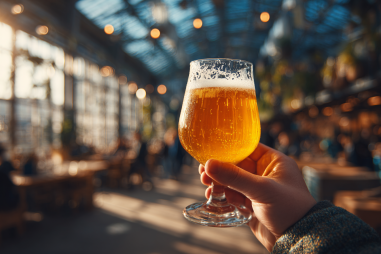The world of craft beer is ever-evolving, with brewers constantly pushing the boundaries of flavor, aroma, and style. One fascinating hybrid that has gained popularity in recent years is the India Pale Lager, often abbreviated as IPL. Marrying the bold hoppiness typical of an India Pale Ale (IPA) with the clean, crisp finish of a lager, the India Pale Lager offers a refreshing yet complex drinking experience. Whether you’re a seasoned homebrewer or a curious enthusiast, understanding the India Pale Lager brewing process will empower you to craft this delightful style with confidence and skill.
What is India Pale Lager?
At its core, an India Pale Lager is a style that combines elements of two traditional beer types: India Pale Ale and lager. The IPA is renowned for its robust hop bitterness, piney and citrusy aromas, and often higher alcohol content. Conversely, lagers are known for their clean malt character, smooth mouthfeel, and lower fermentation temperatures resulting in fewer fruity esters.
By blending these characteristics, the India Pale Lager achieves a beer that showcases the vibrant hop profile of an IPA while maintaining the refreshing clarity and crispness of a lager. This hybrid style has attracted many craft beer lovers looking for something bold but balanced.
Ingredients Used in India Pale Lager Brewing
Brewing an India Pale Lager requires thoughtful ingredient selection to achieve the perfect harmony between hoppiness and lager smoothness. Here are the main ingredients to consider:
- Malt: Base malts like Pilsner malt are preferred for their light color and delicate sweet grain flavor, providing a clean backdrop. Munich or Vienna malts can be added in small amounts for subtle malt complexity.
- Hops: The star ingredient bringing the IPA character. Popular hop varieties include Cascade, Centennial, Citra, and Amarillo, known for their floral, citrusy, and pine notes. Using a combination of bittering and aroma hops helps craft the desired profile.
- Yeast: A lager yeast strain is essential—typically Saccharomyces pastorianus—which ferments cleanly at cooler temperatures, minimizing fruity esters and producing a crisp finish.
- Water: Soft water with balanced mineral content is beneficial. Adjusting sulfate and chloride levels can influence hop sharpness and malt sweetness.
- Adjuncts: While not necessary, some brewers add small amounts of wheat or oats for mouthfeel or dextrose to boost alcohol without adding heaviness.
The Brewing Steps: Mashing, Lautering, Boiling
Mastering the fundamental brewing steps is crucial to the success of your India Pale Lager. Each stage impacts the beer’s final flavor, clarity, and texture.
Mashing
The process starts with mashing, where crushed malted grains are mixed with heated water to activate enzymes that convert starches into fermentable sugars. For an IPL, maintain a mash temperature between 148°F to 152°F (64°C to 67°C). This range strikes a balance, producing a wort that has good fermentability for a dry finish while retaining enough residual sugars to support body and mouthfeel.
Lautering
Following mashing, lautering separates the sweet wort from the spent grain bed. Slowly drain the liquid while sparging with hot water to extract maximum sugars without extracting undesirable tannins. This step is vital to ensuring a clean wort that won’t carry harsh flavors.
Boiling
Boiling serves multiple purposes: sterilizing the wort, inactivating enzymes, and driving off unwanted volatile compounds. It’s also when hops are added to develop bitterness, flavor, and aroma.
The typical boil length is 60 to 90 minutes for IPL brewing, providing enough time for hop utilization and wort concentration. Keep a close eye to prevent boil-overs and maintain consistent heat.
Hop Additions and Timing to Achieve the IPA Character
Hops define the India Pale Lager’s identity, giving it that unmistakable IPA-like aroma and bitterness. However, because the fermentation and conditioning process is different from an ale, hop timing and quantity should be carefully managed.
There are generally three types of hop additions:
- Bittering hops: Added early in the boil (usually at start or within first 15 minutes) to impart bitterness that balances malt sweetness.
- Flavor hops: Added in the middle to later stages of the boil (around 15-30 minutes left) to contribute hop flavor without excessive bitterness.
- Aroma hops: Added in the final 5 minutes or during whirlpool to preserve volatile hop oils, delivering fresh hop aromas.
Dry hopping after primary fermentation is also common for IPLs to intensify aroma without increasing bitterness. Since IPLs ferment at cooler temperatures, hop aromas can be more subdued, so dry hopping is a must to amplify that juicy, citrusy nose.
Fermentation Techniques for Lager Yeast
The defining factor in turning the wort into a lager is fermentation with a lager yeast strain. Unlike ale yeasts, lager yeasts work best at lower temperatures, typically between 48°F and 55°F (9°C to 13°C). This slow, cool fermentation reduces fruity ester production, leading to a cleaner profile.
Fermentation can take anywhere from one to three weeks depending on temperature and yeast health. Maintaining consistent temperature control is critical—fluctuations can result in off-flavors or incomplete fermentation.
Many brewers start fermentation slightly warmer to kick off yeast activity and then gradually drop to lager temperatures. After primary fermentation, the beer often undergoes a diacetyl rest at a slightly warmer temperature for a couple of days to allow the yeast to clean up flavors.
Lagering and Conditioning for Crispness
After fermentation, the beer enters the lagering phase—extended cold storage near freezing (32°F to 39°F, 0°C to 4°C) for several weeks to months. This maturation process allows flavors to meld, unwanted by-products to settle out, and the beer to develop its signature crispness and clarity.
Lagering also helps in softening hop bitterness so it complements the beer rather than overwhelms. Patience during this stage pays off with a polished, refreshing India Pale Lager that carries hop flavors with elegance.
Packaging and Storage Tips
When your India Pale Lager has thoroughly lagered and conditioned, packaging is the next key step. Whether bottling or kegging, good sanitation and minimizing oxygen exposure are crucial to preserve freshness and hop character.
Carbonation levels for IPLs are typically moderate to higher, around 2.4 to 2.8 volumes of CO2, providing liveliness without excessive foam.
Store your finished beer in a cool, dark place to maintain hop aromas and prevent oxidation. IPLs are best enjoyed fresh due to their vibrant hop profiles, so plan your batches accordingly.
Troubleshooting Common Brewing Challenges
Brewing an India Pale Lager presents some unique challenges due to its hybrid nature. Here are a few common issues and tips to tackle them:
- Muted hop aroma: Ensure adequate dry hopping and proper hop timing. Avoid overboiling aroma hops to retain their oils.
- Off-flavors from fermentation: Maintain strict temperature control to prevent fruity esters and unwanted flavors. Use healthy yeast and consider a diacetyl rest.
- Cloudy beer: Extended lagering and effective cold crashing help clarify an IPL. Also, ensure proper filtration or fining if desired.
- Excessive bitterness: Balance hop additions and consider malt bill adjustments. Slightly longer wort boiling can reduce harshness.
By anticipating these issues and adjusting accordingly, you can consistently brew a high-quality India Pale Lager that excites the palate.
Crafting Your Perfect India Pale Lager
Brewing an India Pale Lager is both a rewarding and educational experience that combines the best features of ales and lagers. From careful ingredient selection and precise mashing to meticulous hop management and patient fermentation, each step influences the final beer’s character.
With practice, attention to detail, and a passion for experimentation, you can master the India Pale Lager brewing process and enjoy a beer that is refreshing, hoppy, and uniquely satisfying. Whether sharing with friends or savoring on your own, this delightful hybrid style is sure to become a favorite in your beer repertoire.







